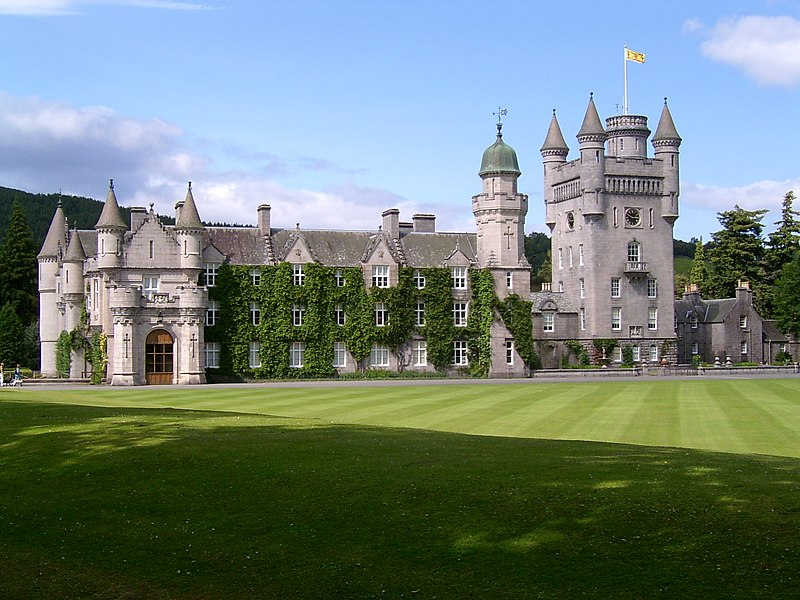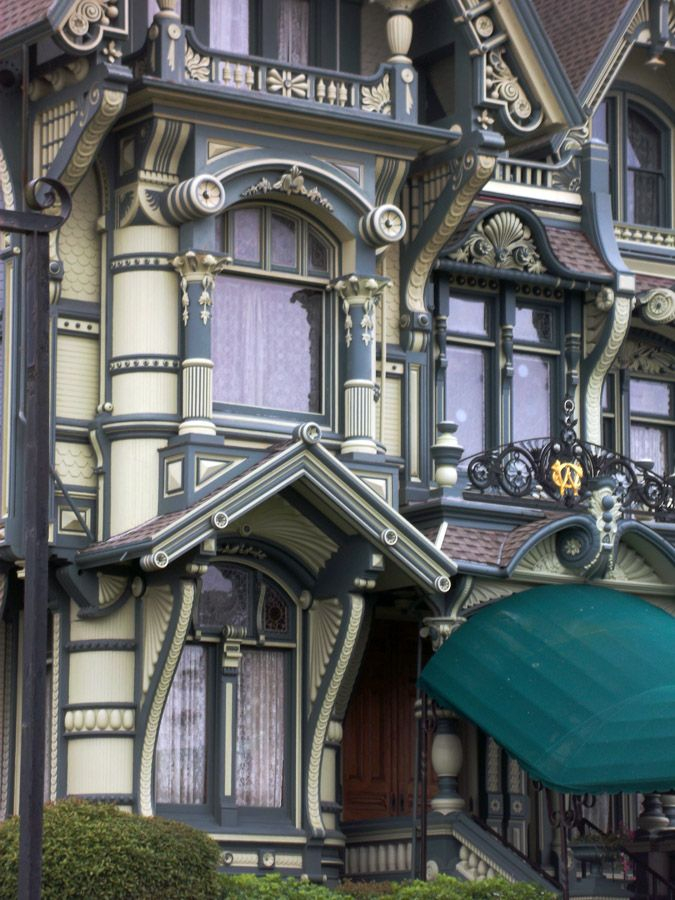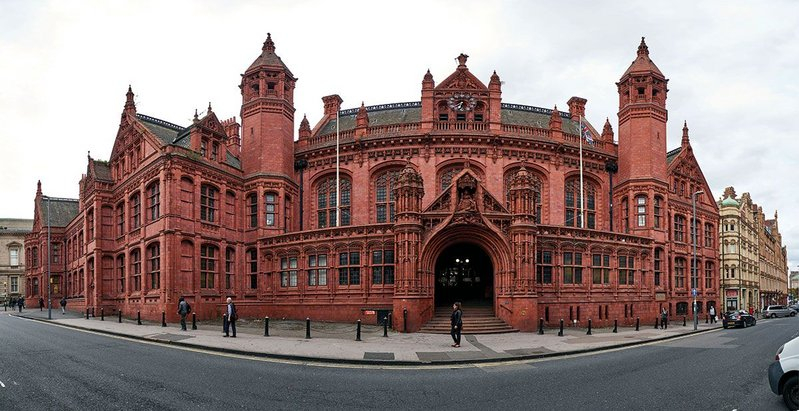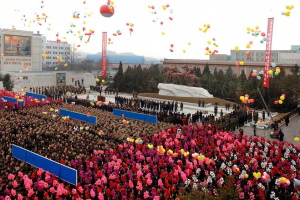Top 10 Most Famous Victorian Architecture
Victorian architecture refers to several revival architectural forms that were well-known in the 18th and 19th centuries and were constructed under Queen ... read more...Elizabeth ( Victorian Era ). Victorian-era buildings had Gothic and Italian designs that were influenced by earlier eras. This article finds out the top of the most famous Victorian architecture.
-
The Palace of Westminster, one of the most famous Victorian architecture, was constructed between the years 1840 and 1870. In Westminster, London, it was created by renowned architects Charles Barry and Augustus Pugin.
Being the home of the UK's House of Parliament, it continues to be one of the most recognizable structures and a symbol for the entire world. Its aesthetic incorporates well-known Gothic designs.
After the catastrophic fire of 1834 caused significant damage to the structure, two adept architects rebuilt it. The structure was transformed into the Palace of Westminster by Barry and Pugin, and in 1987 it was allowed to be designated as one of the Grade I buildings.
The king of Great Britain is the proprietor of this Victorian mansion, which also serves as the royal family's residence. This particular palace hosts many royal ceremonies because it is regarded as the most important emblem of London.The Westminster system of government honors the name of the palace, and the Palace is one of the hubs of political activity in the United Kingdom. "Westminster" has come to stand for the British Parliament and the British Government. One of the most well-known tourist destinations in the city and an emblem of parliamentary democracy is the Elizabeth Tower, also known by the name of its main bell, Big Ben. The Elizabeth Tower is particularly famous for this.
Year: 1840-1870
Location: Westminster, London
Architect: Charles Barry and Augustus Pugin
Thrillophilia 
King Goya -
Prince Albert, one of the most famous architects, built Osborne House between 1845 and 1851. It can be found at East Cowes, Isle of Wight, in Great Britain. The ancient entrance gate still serves as the main entrance to the walled garden, despite the fact that an earlier smaller house on the site was demolished to make room for a much larger new residence. . Osborne House is considered one of the most famous Victorian architectural works.
The house is built in the traditional Italian "palazzo" style, as seen by its attractive outline, two towers, and terrace connected by steps. It was created to harmonize with the island on which it is located, which Prince Albert compared to the Bay of Naples when he visited in 1839 for its mild climate and sweeping views of the Solent.
Queen Victoria loved Italianate construction, the famous Osborne House, and she and her husband wanted to retire to Osborne during her reign. She even spent time there during her widowhood and died there in 1901.
Although it was built for Queen Elizabeth and Prince Albert, some parts of the grounds have been turned into private museums after the Queen's death and are only open to members of the royal family and used to train the Royal Navy. The private museum is now open to the public, including members of the royal family and the public.
Year: 1845 - 1851
Location: Isle of Wight, UK
Architect: Prince Albert
Visit Isle of Wight 
Rabbie's tour -
One of the most famous Victorian architecture is thought to be Balmoral, which was finished in the year 1852. It is situated in the Royal Deeside of Scotland and was constructed by the gifted architect William Smith under the guidance of Prince Albert.
The royal couple, Queen Elizabeth and Prince Albert commissioned the creation. The estate was primarily acquired as private land, and when the Prince made a few improvements, it was built to resemble the renowned Balmoral Castle.
The castle is a prime example of Scottish baronial architecture and is a category A listed structure according to Historic Environment Scotland. The old castle was dismantled immediately after the construction of the new one in 1856.It was divided into two portions, each of which was built from local granite and centered around a courtyard. Even today, a turreted clocktower is a striking architectural element.
Only members of the royal family are permitted access to the Balmoral Castle, which is only open to the public for tours of its gardens and ballroom exhibits.
Year: 1852
Location: Royal Deeside, Scotland
Architect: William Smith with the direction of Prince Albert
Wikipedia 
Glamour -
The Royal Albert Hall, which was constructed between 1867 and 1871, is a sizable elliptical building in the Italian Renaissance style with a façade made completely of red brick and terra cotta. It is situated in Kensington Gore, United Kingdom, and was created by two excellent architects, Captain Francis Fowke and Major Henry Y. D Scott.
The hall's 800-foot-long mosaic frieze surrounds the building, which is primarily made of Fareham Red brick. The frieze is made of foot-long mosaic tesserae slabs that show 16 various allegorical groups of the "Triumph of the Arts and Sciences" in the artwork. Historical and religious phrases are written in 12 inches (300 mm) high terracotta letters above the frieze.
The well-known hall, which features live music and concerts by well-known performers as well as dance performances, award presentations, movie screenings, and sporting events, was built in the Italianate architectural style. Such events have been organized by it ever since ( 150 years ).
Queen Victoria laid the cornerstone for the Royal Albert Hall in 1867 as part of her husband Prince Albert's memorial act. The building was formerly known as the Central Hall of Arts and Sciences. The Royal Albert Hall is considered one of the most famous Victorian architecture.
Year: 1867 - 1871
Location: Kensington Gore, United Kingdom
Architect: Captain Francis Fowke and Major Henry Y.D Scott
Wikipedia 
Country Life -
The Victoria Building, University of Liverpool was built by Alfred Waterhouse between the years 1889 and 1892. It is located in Liverpool, Merseyside, England. It is recorded in the National Heritage List for England as a designated Grade II listed building
The building was primarily built with the concept of a university, including accommodation for teaching, administration, a library, and a standard room within the design. It is also the former headquarters of the University of Liverpool.
The building became the inspiration for the term – red brick university as it was built using only red bricks. Ordinary bricks and terracotta dressings were selected for the Gothic exterior, which led to the coining of the phrase ‘red brick university’ by Bruce Truscott.
Similar high-quality finishing was used throughout the interior. Faience terracotta, turquoise, and buff glazed tiles were used to design the entrance hall in a detailed manner. Ivory and brown glazed bricks lined the hallways, which were split into bays by arches. For structures at the time, additions like electric lighting were innovative. The structure was renovated in 2008, at which point it was converted into a museum and given the name Victoria Gallery and Museum. It deserved as one of the most famous of Victorian architecture.
Year: 1889 - 1892
Location: Liverpool, Merseyside, England
Architect: Alfred Waterhouse
Flikr 
Hotels.com -
The Carson Mansion built between the years 1884 and 1886 is probably one of the most famous Victorian architecture in the United States. It is situated in Old Town, Eureka, California, and was created by Samuel Newson and Joseph Cather.
The structure, which is regarded as the largest Victorian residence in the United States of America, is constructed in a variety of well-known architectural styles, including Queen Anne, Italianate, Stick, and Eastlake. It is an 18-room, four-story building with a tower and a basement, two distinctive features of the Californian architecture.
The four-story house is decorated with vibrant, hand-tooled 19th-century art, such as an elaborate central staircase with white mahogany frames, colorful stained glass panels, substantial redwood ornamentation, rich oak, and cherry paneling and moldings, carved onyx fireplaces, gilt-framed mirrors, and vintage wallpaper and carpets.
The mansion was originally built for renowned American businessman William Carson, but since 1950, the Ingomar Club has been using it as a private clubhouse.
Year: 1884 - 1886
Location: Eureka, California, United States
Architect: Samuel Newson and Joseph Cather
Tripadvisor 
Pinterest -
Between 1868 and 1877, the renowned architect Alfred Waterhouse constructed the Manchester Town Hall. It's in the English city of Manchester.
This edifice, which was constructed in the Neo-Gothic architectural style, is one of the most famous Victorian architecture. The estate was primarily constructed for use at municipal council sessions.
A vast hall, a collection of reception rooms, the Lord Mayor's residence, offices for every division of the corporation, and a chamber for council sessions had to be built on the site, which was an irregular triangle. The demands of the working day and the ceremony were successfully merged by Waterhouse.
The Town Hall was built in the nineteenth century, despite its Gothic architecture from the thirteenth century, according to Waterhouse. It features cutting-edge features including a warm air heating system, and its construction is made of 14 million bricks covered in Spinkwell stone.
The town hall has been transformed into a huge venue for weddings, hosting programs, conferences, and notably for filming movies as a result of its influence and popularity.
Year: 1868-1877
Location: Manchester, England
Architect: Alfred Waterhouse
Visit Manchester 
The architects' journal -
The Kew Gardens' Palm House was constructed between 1844 and 1848 and is situated at the Royal Botanic Gardens in the United Kingdom. Decimus Burton and Richard Turner, two of the most talented architects, constructed the home. It evaluated one of the most famous Victorian architecture.
Since its inception, the house has been home to both tropical and subtropical plants, the most well-known of which are plant palms. For the purposes of including such plants, the estate is considered to be a rainforest. Many of its plants are extinct in the wild or on the verge of extinction. A higher walkway that leads visitors into the larger plants' branches is one of the features. Additionally, Kew features the bigger "Temperate House," which is kept at a cooler temperature.
Originally constructed as prestige symbols in Victorian Britain, various specimens of elaborate glass and iron greenhouses, sometimes referred to as "the Palm House," may still be found in parks and botanical gardens, including Sefton Park in Liverpool and Stanley Park, as well as in other nations.
The first greenhouse of this size was The Palm House. It was also the first time that wrought iron was used extensively in a structure. The Kew Gardens greenhouse is accessible to the public four days a week ( Monday to Thursday).
Year: 1844-1848
Location: Royal Botanic Gardens, United Kingdom
Architect: Decimus Burton and Richard Turner
Kew garden 
Wikipedia -
The renowned Charles Barry constructed the Cliveden Pal in the year 1851. It is situated in South East England's Buckinghamshire. The estate was constructed in the Italianate style and is regarded as one of the most famous Victorian architecture.
The structure was initially constructed in 1666, twice destroyed by fire (1795 and 1849), and then rebuilt as the Cliveden Pal in 1851. It is well-known for being the scene of the Profumo affair, a relationship between the British War Secretary and a showgirl who was 19 years old.
The current home combines Roman Cinquecento and English Palladian architecture. The house's exterior is covered with Roman cement, with terracotta accents like finials, capitals, and balusters.
A Latin inscription recalling the house's history can be seen below the roof's balustrade. It was written by William Ewart Gladstone, who was the country's prime minister at the time. POSITA INGENIO OPERA CONSILIO CAROLI BARRY ARCHITECT A MDCCCLI, which translates to "The work performed by the brilliant plan of architect Charles Barry in 1851," is written on the west front. The Lucas Brothers were the project's principal contractor.
The National Trust restored the façade of the mansion and erected a new lead roof in 1984–1986, while Cliveden Hotel repaired the inside. Additional external work, including the repair of 300 sash windows and 20 wooden doors, was done in 2013.
Year: 1851
Location: Buckinghamshire, South East England
Architect: Charles Barry
The Sun 
Evoke -
The two renowned architects Aston Webb and Ingress Bell constructed the Victoria Law Courts, which were finished in the year 1887. It is situated on Birmingham's Corporation Street. Victoria Law Courts is assessed as one of the most famous Victorian architecture.
The estate is made of red and terracotta bricks and is listed as Grade I architecture. The foundation stone was placed by Queen Victoria, which helped it become well-known and have an impact on international history.
The walls of the interior, particularly the Great Hall, are covered in exquisite decoration and sand-colored terracotta. Gibbs and Canning Limited of Tamworth created the terracotta that was utilized inside. The great hall's chandeliers are legendary for being the first to be powered by electricity and for imitating the Queen's coronation crown. Even the sand-colored terracotta used in the hall contributed to the estate's increased notoriety.
Alaska Works and a small school originally resided in the Victoria Law Court, which is now home to the Magistrate Court of Birmingham.
Year: 1887
Location: Corporation Street, Birmingham
Architect: Aston Webb and Ingress Bell
Riba journal 
Wikipedia common































